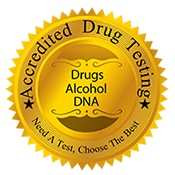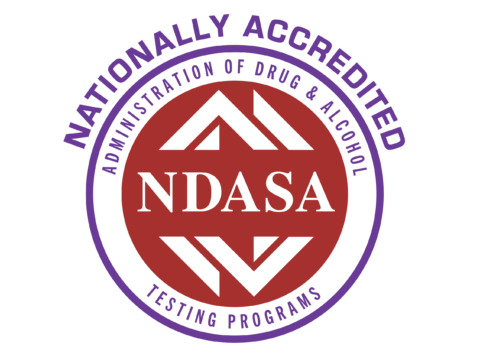Oral Fluid Drug Testing, Kent City, MI
Oral fluid drug testing in Kent City Michigan is one of the most convenient drug testing methods available
at our testing locations in the Kent City Michigan area and can detect recent drug use within the last 10
hours. Our Kent City, Michigan oral fluid drug testing collection specialists are trained and certified to
perform an oral fluid drug test which will be sent to a certified laboratory to be analyzed and reported
as positive or negative for recent drug use.
DOT Oral Fluid Testing Coming Soon!
Upon final device and laboratory testing approval, Accredited Drug Testing will conduct at all testing centers nationwide, DOT Oral Fluid drug testing. Did you know, on May 2, 2023 the Department of Transportation published the Federal Register FR 27596. This rule took effect June 1, 2023. The Oral Fluid testing device is days away from FDA Approval and once the laboratories receive HHS/SAMHSA Approval, Accredited Drug Testing will lead the way in DOT oral fluid testing!
What will this mean for DOT regulated employers?
Once the oral fluid testing device is FDA approved and at least 2 labs are HHS certified, employers will be allowed to conduct either an oral fluid collection or DOT urine collections for any DOT regulated drug test. Examples include pre-employment, random, reasonable suspicion/cause, post-accident, return to duty or follow up. The option to conduct an oral fluid test will be up to the employer and we recommend employers to review and update their policies and develop standing orders for their collectors/collection sites.
What will this mean for DOT regulated employers?
Once the oral fluid testing device is FDA approved and at least 2 labs are HHS certified, employers will be allowed to conduct either an oral fluid collection or DOT urine collections for any DOT regulated drug test. Examples include pre-employment, random, reasonable suspicion/cause, post-accident, return to duty or follow up. The option to conduct an oral fluid test will be up to the employer and we recommend employers to review and update their policies and develop standing orders for their collectors/collection sites.
What is oral fluid drug testing?
Oral fluid/saliva is a clear liquid which is secreted by salivary glands of the mouth and the origins of this testing method are derived from alcohol detection and roadside sobriety testing. Saliva testing is becoming a more popular option for drug test because it provides a non-invasive alternative to a urine or hair drug test. Furthermore, an oral fluid collection is a directly observed collection which makes it less susceptible to a specimen being adulterated.
Is Oral Fluid Drug Testing Accurate?
Any drug testing is accurate when supported by laboratory-based screening and confirmation testing process. In fact, oral fluid testing is tested at a much lower screening level than urine. During an oral fluid test, the laboratory performs an enzyme linked immunosorbent assay commonly referred to as (ELISA) microplate technology. This ELISA screening method provides adequate sensitivity to detect drugs of abuse in oral fluid specimens. All non-negative oral fluid specimens are then analyzed during confirmation testing by mass Spectrometry procedures.
What Drugs Are Screened in an Oral Fluid Drug Test?
Amphetamine/methamphetamine/ecstasy |
Barbiturates |
Benzodiazepines |
Buprenorphine |
Cannabinoid (THC) |
Cocaine |
Cotinine |
Ethyl Alcohol |
Methadone |
Opiates (expanded menu) |
Phencyclidine (PCP |
Propoxyphene |
How Long Will My Results Take?
Negative results for laboratory based oral saliva test is typically within 24 hours after the specimen has been received at the laboratory. Results for confirmation testing or non-negative results are usually available within an additional 72 hours.
What are some benefits for Oral Fluid Drug Testing?
- Ideal for detecting recent drug abuse. Popular with programs that require convenient, gender-neutral specimen collection. Not used for regulated workplace testing (DOT)
- Ideal for detecting recent drug use (4-24 hours). Estimates depend on the substance, amount, and frequency of use
- Conveniently collected on-location. Specimen directly and easily observed. No gender-specific staff needed
- Minimal chance of specimen adulteration
- Additional oral fluid specimens can be provided immediately, or within minutes when mouth is dry
- Cost-effective when considering collection overhead factors: reduced collection time, no need for gender specific staff, or separate restroom/collection facility
- May be more effective for post-accident and reasonable suspicion testing
Handy Resources
Comprehensive Online Resources for Drug Testing
- National Institute on Drug Abuse (NIDA)
Provides comprehensive information on drug testing and its role in substance use disorder treatment.
- FDA: Drug Testing
Explains the FDA's role and regulations concerning drug testing for consumers.
- PDR.net
Provides detailed drug information and safety updates through a mobile-friendly platform.
- BeSafeRx - FDA
Resource by the FDA to help consumers identify and choose safe online pharmacies.
- SAMHSA: Drug Testing Resources for the Workplace
Resources and guidelines for drug testing in the workplace.
- Drugs.com
Provides drug information, side effects, and interactions for consumers and professionals.
- Drug Abuse Screening Test (DAST)
Online version of the DAST to help individuals assess whether they have a drug problem.
- Merck Manuals
Consumer-friendly medical resource providing comprehensive information on a wide array of health topics, including drug testing.
- SAMHSA Store
Provides access to resources and publications on substance use prevention and treatment.
- National Association of Boards of Pharmacy (NABP)
Information on state boards of pharmacy and regulations, including those related to drug testing.
- CDC: Workplace Health Promotion
CDC's resources on substance use and drug testing in the workplace.
- Mayo Clinic: Drug Testing
General information about the procedures and types of drug tests.
- MedlinePlus: Drug Testing
Offers information about various drug tests and their uses in medical diagnosis and treatment.
- University of Rochester Medical Center Health Encyclopedia
Provides a detailed entry on drug testing, including how tests are conducted and what they detect.
- World Health Organization (WHO)
International guidelines and information on public health, including substance abuse and drug testing.
- Healthline: Drug Testing
Consumer health site offering information on how drug tests work and what they look for.
- WebMD: Drug Testing
Provides a patient-oriented overview of drug testing and its purposes.
- National Center for Biotechnology Information (NCBI)
Provides a vast database of scientific studies, including research on drug testing and its effectiveness.
AI Overview
Overview of Oral Fluid Drug Testing
Oral fluid drug testing, also known as saliva drug testing, is a non-invasive method used to detect the presence of drugs in an individual's system. This testing method is increasingly popular due to its convenience, accuracy, and ability to detect recent drug use. It is commonly used in workplace drug testing, criminal justice settings, and rehabilitation programs.
How Oral Fluid Drug Testing Works
Oral fluid drug testing involves collecting a saliva sample from the individual being tested. This is typically done using a swab placed in the mouth, between the cheek and gum, to absorb saliva. The collected sample is then analyzed for the presence of drugs or their metabolites. The process is quick and straightforward, usually taking only a few minutes.
Advantages of Oral Fluid Drug Testing
- Non-invasive: Unlike blood tests, oral fluid testing does not require needles, making it a more comfortable option for individuals.
- Easy sample collection: The collection process is simple and can be performed on-site without the need for specialized equipment or facilities.
- Detection of recent drug use: Oral fluid testing is particularly effective at detecting drugs used within the last 24 to 48 hours, making it ideal for identifying recent drug use.
- Reduced risk of tampering: The collection process is observed, minimizing the chances of sample adulteration or substitution.
- Fast results: Results can often be obtained within a few hours, allowing for timely decision-making.
Drugs Detected by Oral Fluid Testing
Oral fluid drug tests can detect a wide range of substances, including but not limited to:
- Marijuana (THC)
- Cocaine
- Opiates (e.g., heroin, morphine)
- Amphetamines (e.g., methamphetamine, ecstasy)
- Benzodiazepines
- Methadone
- Phencyclidine (PCP)
- Barbiturates
Applications of Oral Fluid Drug Testing
Oral fluid drug testing is used in various settings, including:
- Workplace Testing: Many employers use oral fluid tests to ensure a drug-free work environment, promoting safety and productivity.
- Law Enforcement: Police officers may use saliva tests during roadside checks to determine if drivers are under the influence of drugs.
- Rehabilitation Programs: Treatment centers utilize these tests to monitor clients' compliance with sobriety requirements.
- Sports Organizations: Athletes may be tested to ensure compliance with anti-doping regulations.
Limitations of Oral Fluid Drug Testing
Despite its advantages, oral fluid drug testing has some limitations:
- Short detection window: While effective for detecting recent drug use, it may not identify drugs used beyond 48 hours prior to testing.
- Environmental contamination: External factors such as food or beverages can potentially affect the test results if proper precautions are not taken.
- Limited detection for certain drugs: Some substances may be present in lower concentrations in saliva, making them harder to detect.
Conclusion
Oral fluid drug testing is a reliable and efficient method for detecting recent drug use. Its non-invasive nature, ease of sample collection, and quick results make it a preferred choice in various sectors. However, it is essential to be aware of its limitations and use it in conjunction with other testing methods when necessary to ensure comprehensive drug screening.
Were you looking, instead, for:
When you need a test, choose the best!
Local Area Info: Kent City, Michigan
As of the census of 2010, there were 1,057 people, 373 households, and 268 families residing in the village. The population density was 800.8 inhabitants per square mile (309.2/km2). There were 407 housing units at an average density of 308.3 per square mile (119.0/km2). The racial makeup of the village was 88.8% White, 0.9% African American, 0.3% Native American, 0.2% Asian, 7.7% from other races, and 2.1% from two or more races. Hispanic or Latino of any race were 17.8% of the population.
There were 373 households of which 43.7% had children under the age of 18 living with them, 49.9% were married couples living together, 14.2% had a female householder with no husband present, 7.8% had a male householder with no wife present, and 28.2% were non-families. 23.6% of all households were made up of individuals and 7% had someone living alone who was 65 years of age or older. The average household size was 2.83 and the average family size was 3.33.
The median age in the village was 30.6 years. 30.7% of residents were under the age of 18; 9.8% were between the ages of 18 and 24; 28.9% were from 25 to 44; 22.8% were from 45 to 64; and 7.7% were 65 years of age or older. The gender makeup of the village was 48.2% male and 51.8% female.



